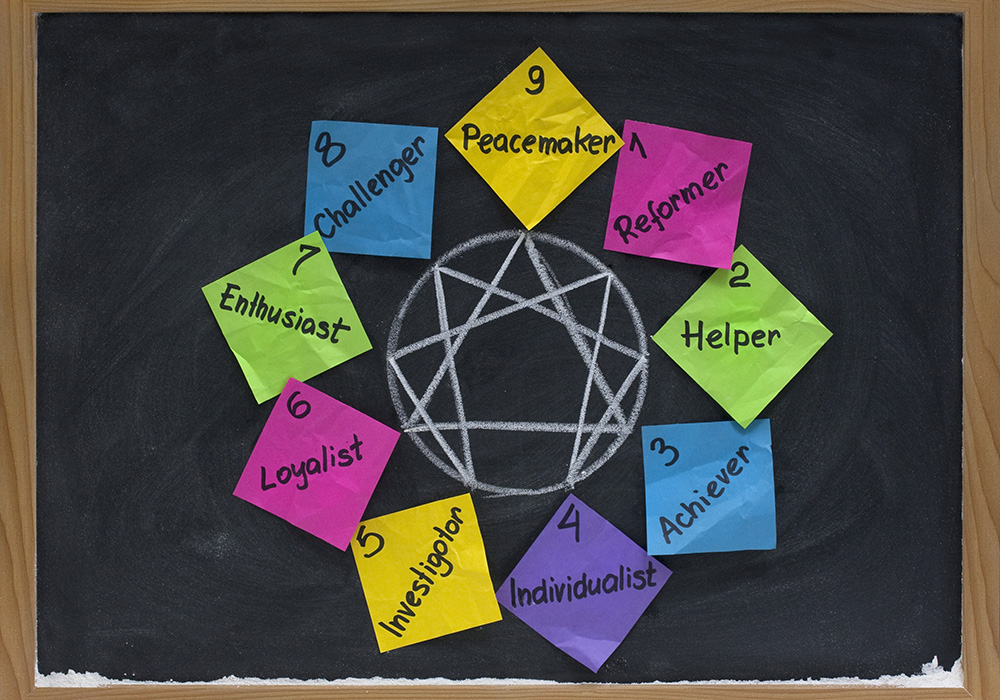Have you heard of the Enneagram?
In the past several years, the Enneagram has become a popular tool for categorizing and understanding personality. It seems to be popping up all over the place through coaches, social media, memes and in various organizations. It has somewhat replaced the Myers Briggs Type Indicator which is viewed by some as outdated and not as helpful in understanding themselves and others.
So, what is it?
The Enneagram is a study of the nine basic types of people. It explains why we behave the way we do, and points to specific directions for individual growth. It’s an important tool for self-awareness and also aids in understanding and improving relationships with others in your life. It teaches that early in life we learned to feel safe and cope with our circumstances by developing a strategy based on our natural talents and abilities.
Where did the name come from?
Ennea is Greek for the number 9 and gram means “a drawing”. The Enneagram means a drawing with nine points.

Should Christians use it?
While some think it is Christian astrology and others oppose it because its symbol looks similar to pentagram, I personally think this is hogwash (do people still use that term or am I showing my age?) Many Christian groups, organizations and churches have embraced it as a tool for deepening Christian understanding and practice. I personally have found it to be an instrument of grace, drawing me closer to God as it has helped me understand myself and others better.
Although I am a bit of a personality assessment nerd and see value in the nuances of various tools, I think the Enneagram is one of my favorites. I like it so much that I got my certification as a Facilitator and Coach using the tool so thought I’d share a little of the knowledge I’ve gained.
The 9 Types
Let’s explore the types in more detail. Although classifications may vary a bit depending on the source, the most commonly used typology is as follows:
- Type 1 – The Reformer (The Rational, Idealistic Type: Principled, Purposeful, Self-Controlled, and Perfectionistic)
- Type 2 – The Helper (The Caring, Relationship-Oriented Type: Compassionate, Generous, People-Pleasing, and Possessive)
- Type 3 – The Achiever (The Success-Oriented, Pragmatic Type: Hard-working, Achieving, Excelling, Driven, and Image-Conscious)
- Type 4 – The Individualist (The Sensitive, Withdrawn Type: Unique, Creative, Self-Absorbed, and Often Moody)
- Type 5 – The Investigator (The Intense, Cerebral Type: Analytical, Perceptive, Problem-Solving, Secretive, and Isolated)
- Type 6 – The Loyalist (The Committed, Security-Oriented Type: Engaging, Responsible, Anxious, Risk Conscious, and Suspicious)
- Type 7 – The Enthusiast (The Busy, Fun-Loving Type: Spontaneous, Versatile, Distractible, and Scattered)
- Type 8 – The Challenger (The Powerful, Dominating Type: Self-Confident, Decisive, Willful, and Confrontational)
- Type 9 – The Peacemaker (The Easygoing, Self-Effacing Type: Conflict Avoidant, Mediator, Receptive, Reassuring, Agreeable, and Complacent)
In addition to the primary type, an individual may have strong characteristics of one of the adjacent types. This is referred to as the “wing.” A person may be described, for example, as a Type 2 with a wing of 3, abbreviated as “2w3.”
What do you think your type is?
For the next few weeks, we will be exploring each type in more detail. Stay tuned to learn more!



